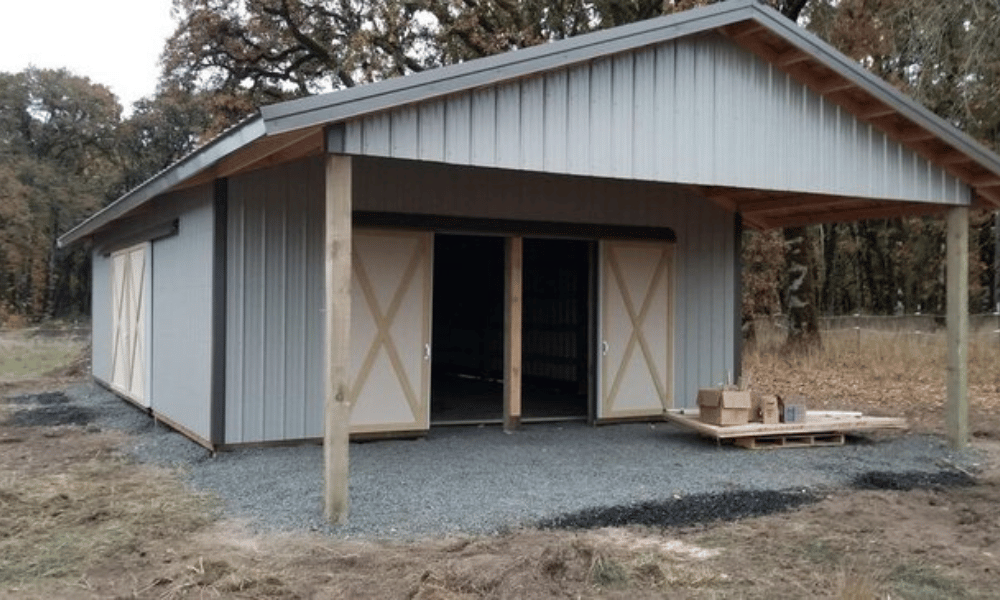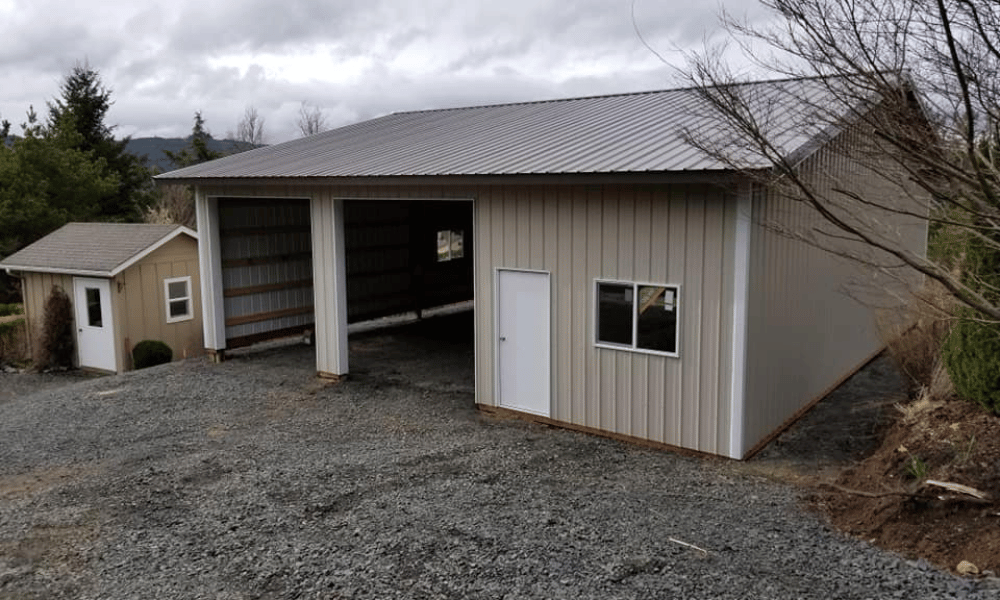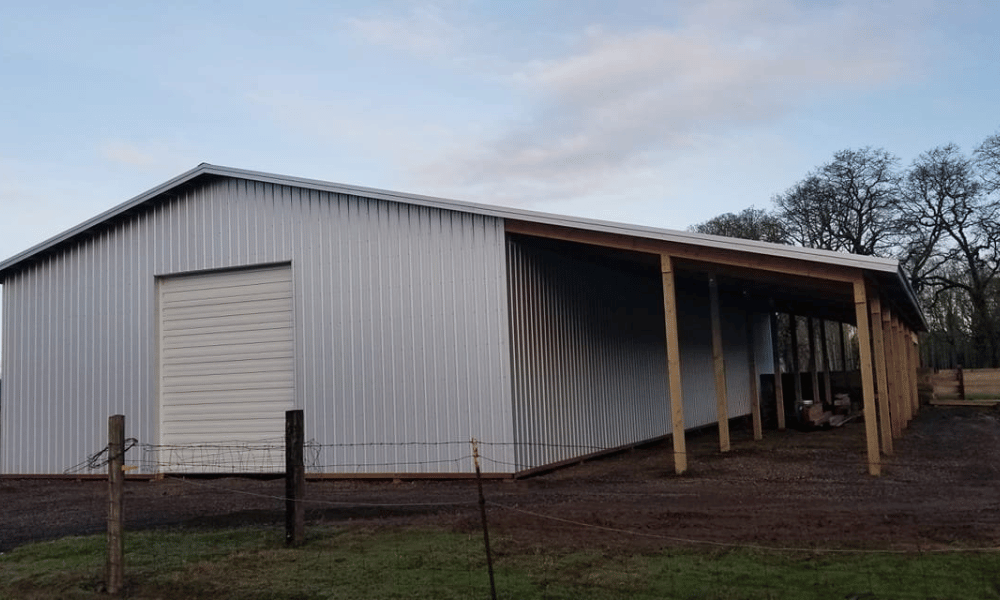Introduction
Pole barn garages have become increasingly popular among homeowners and hobbyists alike. Offering a flexible space for storage, workshops, and vehicle protection, these structures are both functional and aesthetically pleasing. However, one of the significant challenges faced by owners of pole barn garages pole barns is moisture damage. How to prevent moisture damage in your pole barn garage is a question that many ponder, especially given how detrimental excess moisture can be to the integrity of the building and its contents.
In this article, we will dive deep into understanding moisture damage, examining its causes, effects, and most importantly, effective prevention strategies. We'll explore various aspects such as ventilation, insulation, drainage systems, materials used in construction, and much more. By the end of our discussion, you’ll have a robust toolkit at your disposal to keep your pole barn garage dry and protected.
Understanding Moisture Damage in Pole Barn Garages
What Is Moisture Damage?
Moisture damage occurs when water infiltrates a building's structure or components, leading to deterioration over time. In pole barn garages, this can manifest through mold growth, wood rot, rust on metal surfaces, and compromised structural integrity.
Causes of Moisture Damage in Pole Barn Garages
Poor Ventilation
Without adequate airflow, humidity can build up inside the garage.
Inadequate Insulation
Insufficient insulation can lead to condensation forming on cold surfaces.
Water Intrusion

Temperature Fluctuations
Changes in temperature can cause condensation to form inside the garage.
Humidity Levels
High levels of humidity outside can translate into similar conditions inside.
Signs of Moisture Damage
Be vigilant! Here are some telltale signs that moisture may be causing problems:
- Visible mold or mildew Musty odors Warping wood Peeling paint or rusted metal Water stains on walls or ceilings
How to Prevent Moisture Damage in Your Pole Barn Garage
1. Install Proper Ventilation Systems
Good ventilation is critical for any pole barn garage to combat moisture buildup effectively.
Types of Ventilation Systems
- Natural Ventilation: This relies on airflow through openings like windows or vents. Mechanical Ventilation: Utilizes fans to actively move air within the space.
Practical Tips for Effective Ventilation
- Ensure vents are positioned high and low for optimal air circulation. Consider installing exhaust fans that activate automatically based on humidity levels.
2. Use Quality Insulation Materials
Insulation acts as a barrier against temperature fluctuations that lead to condensation.
Recommended Insulation Options
- Fiberglass batts Spray foam insulation Rigid foam boards
Installation Tips
Make sure to cover all gaps and seams during installation; even small openings can allow moisture infiltration.
3. Implement Effective Drainage Solutions
Water management is crucial for protecting your pole barn garage from moisture intrusion.
Types of Drainage Systems
French Drains:
These trenches redirect water away from the foundation.
Gutters & Downspouts:
Direct rainwater away from the building’s perimeter.
Grading:
Ensure the ground slopes away from your structure.
Maintenance Tips
Regularly check gutters and drains for blockages to ensure effective water diversion.
4. Select Appropriate Building Materials
Choosing materials designed specifically for moisture resistance can significantly reduce risks.

Best Materials for Pole Barn Garages
- Treated lumber resistant to rot Metal roofing with corrosion-resistant coatings Vapor barriers during construction
5. Monitor Humidity Levels Regularly
Keeping tabs on indoor humidity will help you maintain an optimal environment within your garage.
Tools Needed
Invest in a hygrometer; it’s a simple tool that measures indoor humidity levels effectively!
Ideal Humidity Levels
Aim for indoor humidity levels between 30% - 50%.
Additional Strategies for Moisture Prevention
6. Regular Maintenance Checks
Keep an eye out for leaks or standing water during routine inspections!
7. Use Dehumidifiers When Necessary
If you live in a particularly humid area, consider using dehumidifiers to control moisture levels proactively.
8. Seal Cracks and Openings
Regularly inspect joints between walls and roofs as well as around doors and windows; seal any cracks with caulk or weather stripping!
FAQ Section
Q1: How often should I check my pole barn garage for moisture damage?
You should conduct checks at least twice a year—ideally during spring and fall—to catch potential issues early.
Q2: Can I use regular insulation materials in my pole barn garage?
While you can use them, it’s better to select materials specifically designed for high-moisture environments like closed-cell spray foam insulation.
Q3: What are some DIY methods for improving ventilation?
You could install louvered vents or create additional openings with sliding doors to facilitate airflow naturally!

Q4: Is mold growth common in pole barn garages?
Yes! If proper ventilation isn’t maintained along with adequate humidity control—mold growth becomes likely over time.
Q5: Should I worry about pests due to higher humidity levels?
Absolutely! High humidity creates favorable conditions not only for mold but also attracts insects like termites which could further harm wooden structures!
Q6: Are there any specific products I should consider investing in?
Certainly! Look into vapor barriers designed explicitly for agricultural buildings—they serve as excellent defenses against unwanted moisture infiltration!
Conclusion
Dealing with moisture damage doesn’t have to feel daunting if you take proactive steps towards prevention! By focusing on ventilation systems tailored insulation techniques drainage solutions quality materials regular maintenance monitoring equipment—you can drastically reduce risks associated with excess dampness while preserving both functionality aesthetics within your beloved pole barn garage! Remember—an ounce of prevention truly is worth a pound of cure when it comes down keeping things dry safe over time!
By implementing these strategies outlined above along with continuous vigilance—you'll ensure your space remains inviting rather than an unwelcome breeding ground dampness-induced disasters! So gear up roll sleeves; let’s keep that pole barn garage shipshape together!